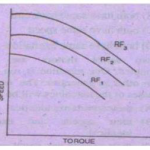41. All of the following elements have five valence electrons EXCEPT
a. Antimony
b. Arsenic
c. Gallium
d. Phosphorous
42. Which of the following elements has four valence electrons ?
a. Arsenic
b. Silicon
c. Boron
d. Indium
43. All of the following elements have three valence electrons EXCEPT
a. Boron
b. Indium
c. Gallium
d. Arsenic
44. Which of the following element has the highest atomic number
a. Antimony
b. Boron
c. Silicon
d. Aluminium
45. Which of the following result in the movement of a hole
a. movement of neutron
b. movement of proton
c. A vacancey is filled by a valence electron from the neighbouring atom
d. All of the above
46. A donor type impurity must have
a. No charge
b. Negative or Positive charge
c. Only their valence electrons
d. only five valence electrons
47. The conduction band is
a. same as forbidden energy gap
b. generally located on the top of the crystal
c. generally located on the bottom of the crystal
d. A range of energies corresponding to the energies of the free electrons
48. The forbidden energy gap in semi-conductors
a. Is always zero
b. Lies just below the valence band
c. lies between the valence band and the conduction band
d. lies just above the conduction band
49. Which of the following semi-conductors is electrically positive
a. Intrinsic semi-conductors
b. Extrinsic semi-conductors
c. P-type semi-conductors
d. N-type semi conductors
e. None of the above
50. In a N-type semiconductor , the concentration of minority carries mainly depends on
a. the number of acceptor atoms
b. the number of donor atoms
c. the extent of doping
d. the temperature of the following



